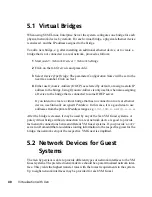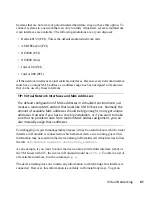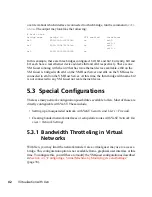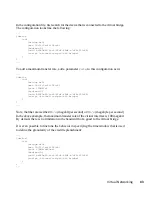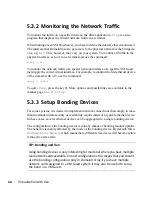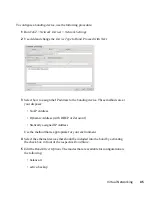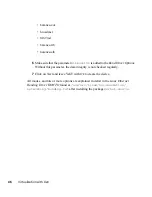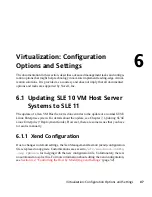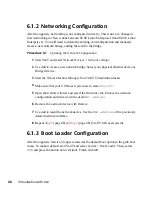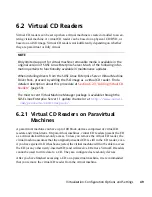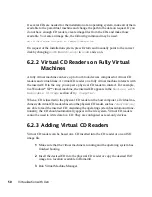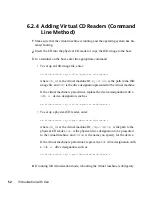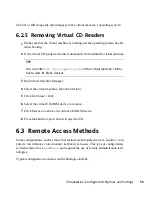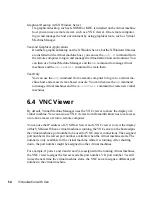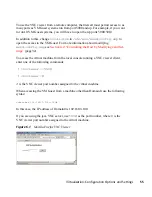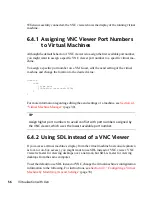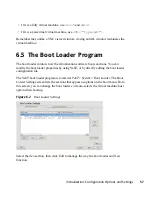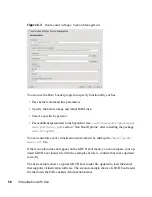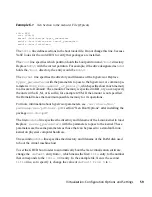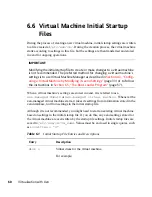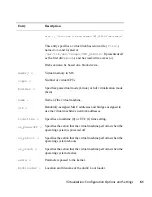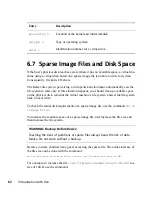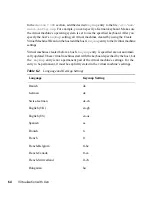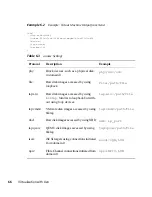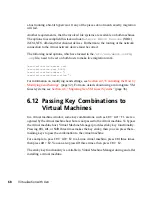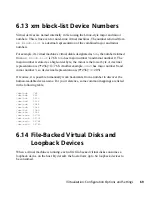
Graphical Desktop with X Window Server
If a graphical desktop, such as GNOME or KDE, is installed on the virtual machine
host you can use a remote viewer, such as a VNC viewer. On a remote computer,
log in and manage the host environment by using graphical tools, such as Virtual
Machine Manager.
Text and Graphical Applications
If neither a graphical desktop nor the X Window Server, but the X Windows libraries
are installed on the virtual machine host, you can use the
ssh -X
command from
the remote computer to log in and manage the virtualization host environment. You
can then use Virtual Machine Manager and the
xm
command to manage virtual
machines and the
vm-install
command to create them.
Text Only
You can use the
ssh
command from a remote computer to log in to a virtual ma-
chine host and access its text-based console. You can then use the
xm
command
to manage virtual machines and the
vm-install
command to create new virtual
machines.
6.4 VNC Viewer
By default, Virtual Machine Manager uses the VNC viewer to show the display of a
virtual machine. You can also use VNC viewer from Domain0 (known as local access
or on-box access) or from a remote computer.
You can use the IP address of a VM Host Server and a VNC viewer to view the display
of this VM Guest. When a virtual machine is running, the VNC server on the host assigns
the virtual machine a port number to be used for VNC viewer connections. The assigned
port number is the lowest port number available when the virtual machine starts. The
number is only available for the virtual machine while it is running. After shutting
down, the port number might be assigned to other virtual machines.
For example, if ports 1 and 2 and 4 and 5 are assigned to the running virtual machines,
the VNC viewer assigns the lowest available port number, 3. If port number 3 is still
in use the next time the virtual machine starts, the VNC server assigns a different port
number to the virtual machine.
54
Virtualization with Xen

